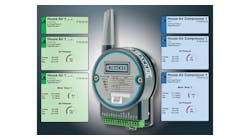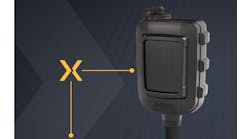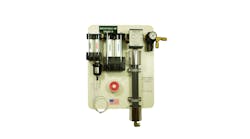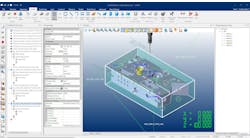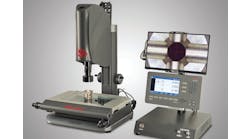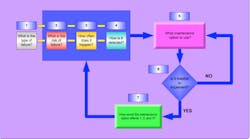Latest from Testing/QC
Automation keeps expanding, and there is no end in sight. This should result in better products, faster deliveries, and lesser cost. However the fast pace of change requires a new maintenance approach. In many cases, new technology has not produced the promised results, because of the obsolete maintenance mindset.
Remember the old days? we had selector switches, relays, and linkages. Today, HMI, PLCs, and electronic probes have replaced these components. In reality, these advancements have made the maintenance of the equipment much more complicated. As automation technology keeps reaching new heights, it also introduces different types of component failures that cause downtime. These are called random failures, and the most difficult task for any maintenance department is how to deal with these breakdowns. As the name implies we have very little knowledge of when a random failure would occur.
For example it is difficult to detect an electronic card failure. Granted, the new technology is more reliable and precise; however, failures occur without warnings. The traditional time-based maintenance (PMs) worked great for age-related failures such as: guides rails and mechanical devices, however; it has very little success on random failures. Nevertheless the same, traditional preventative maintenance is used today as it was being used decades ago. This is because; companies have not introduced or do not know how to implement new maintenance strategies.
Foundries must take off their blindfolds and develop a new strategy for asset management, and make it a mandatory process until it becomes a new mindset. The fact is that as market conditions change, companies quickly introduce new financial forecast and sales strategies. However, very few have developed a new program for maintaining their highly automated assets.
Failures are just like diseases: as a new disease enters our world, medical researchers immediately develop new medications to prevent, eliminate or reduce the consequence of the disease. In the same manner the new technology era requires an all-inclusive maintenance program that focuses on elimination, prevention and consequence reduction of failures. This is called the maintenance reliability program.
Five Pillars of Maintenance Reliability
Any solid maintenance reliability program has five fundamental pillars: management support, departmental reliability teams, training, a reliability system, and success measurement methods.
Management support: Maintenance reliability is a company program, and not just another maintenance plan or flavor of the month. If it were implemented properly, it would become the way of life in the organization. Therefore, it must have the management support at all levels. Operations, maintenance, quality, purchasing, engineering, safety and environmental management, all must come together to support this program. Most important, operations and maintenance must break up the supplier-customer relationship and become a team; otherwise the journey to reliability will become frustrating and would not produce results.
Departmental reliability teams: Each production department shall develop a team that should include knowledgeable production operators, production supervisors, maintenance supervisors, maintenance planners, and maintenance personnel such as mechanics and electricians.
The team members shall choose a facilitator. Normally, the facilitator will be a maintenance planner, or an engineer, but it could be anyone from the team. The facilitator normally organizes the meetings, keeps taps on the activities, and follows up on the action items.
Training: All management and the reliability teams must be trained on maintenance reliability. They must understand all the concepts and definitions, and how to apply them before undertaking any project.
Reliability system: The company must adopt a solid reliability system that the team members can use, and this applies the same across the organization. All critical pieces of equipment shall be examined within this system and a comprehensive plan must be developed to make sure every step is taken to eliminate or prevent failures — or consequences of failures. Failures are all-inclusive, meaning equipment failures, quality issues, and performance problems.
Maintenance reliability
A correct maintenance reliability system has several components:
Type of failure: The maintenance reliability team shall work together to identify the types of failures. Correct types of failures must be identified in order to select an accurate maintenance option. This is a crucial step toward making the equipment more reliable.
Risk of failure: The team must determine the risk of the failure. What happens if the piece of equipment fails? Does the failure cause environmental or safety issues, or does it cause major downtime or product rework?
Failure occurrence: The maintenance reliability team shall determine the frequency of the failure, meaning how often the failure occurs.
Current method of detection: Currently what method is being used to detect the initial issue, prior to the final failure? Meaning, is there a way to detect this failure before it occurs?
Maintenance option, or counter measure: The maintenance reliability team shall implement the correct maintenance option for the determined type of failure. The chosen option is the maintenance plan to eliminate, prevent or reduce the consequence of the failure.
Maintenance options could be one or a combination of the followings:
• Time-based maintenance
• Event-based maintenance
• Condition-based maintenance
• Redundancy
• Operational procedures
• Training (operation, or maintenance)
• Maintenance procedures
• Redesign
• Continuous monitoring
• Run to failure
Feasibility: Is the countermeasure feasible? Is it possible to implement the fix, or is it financially viable? In many cases, our first option might not be practical, and we should choose another option.
Results: How do the countermeasure effect steps 2, 3, and 4? Should the countermeasure become a permanent fix or do we need to re-examine it?
Success measurements
If the new maintenance program is implemented correctly, it will produce 15 significant benefits.
- Eliminate PM processes that have no value
- Eliminate downtime
- Reduce emergency work orders
- Reduce maintenance overtime
- Increase plant productivity
- Reduce annual shutdown duration, and cost
- Improve maintenance planning
- Identify training requirement, for maintenance and operations.
- Truly identify operations and maintenance responsibilities.
- Reduce total maintenance cost
- Create a cooperative environment between operation and maintenance
- Identify the capital projects that need to be completed to reduce failures
- Identify design issues that need to be addressed
- Identify weaknesses in operating procedures
- Identify the correct spare parts be kept in inventory
Ultimately, the plant management will develop success measurement metrics such as overall equipment effectiveness, total maintenance cost, number of emergency work-orders per month, and so on.
Finally the maintenance reliability shall become the doctrine of the organization’s overall asset management program. If any failure continues to occur, the responsible reliability team shall refer back to the maintenance reliability system to re-examine the maintenance option, or the identification of the type of failure, and fine-tune the countermeasures.
Kaveh Golestaneh is the developer of Simplified Maintenance Reliability for Foundries (SMRF). He is an electrical engineer with a degree in Physics. He noted he has spent most of his professional career in the metalcasting industry, having held various positions ranging from plant engineer and maintenance manager to plant manager, with companies that include General Electric, Gunite, EMI, and Hitachi Metals. However he explains always been passionate about maintenance and engineering, and specifically about how to make equipment more reliable.
